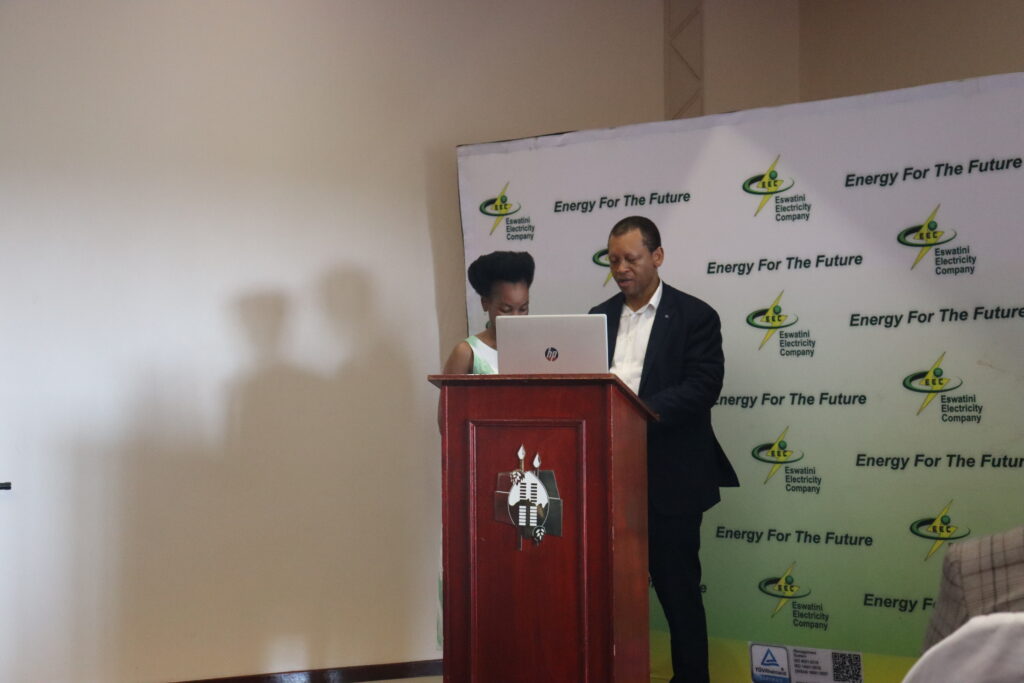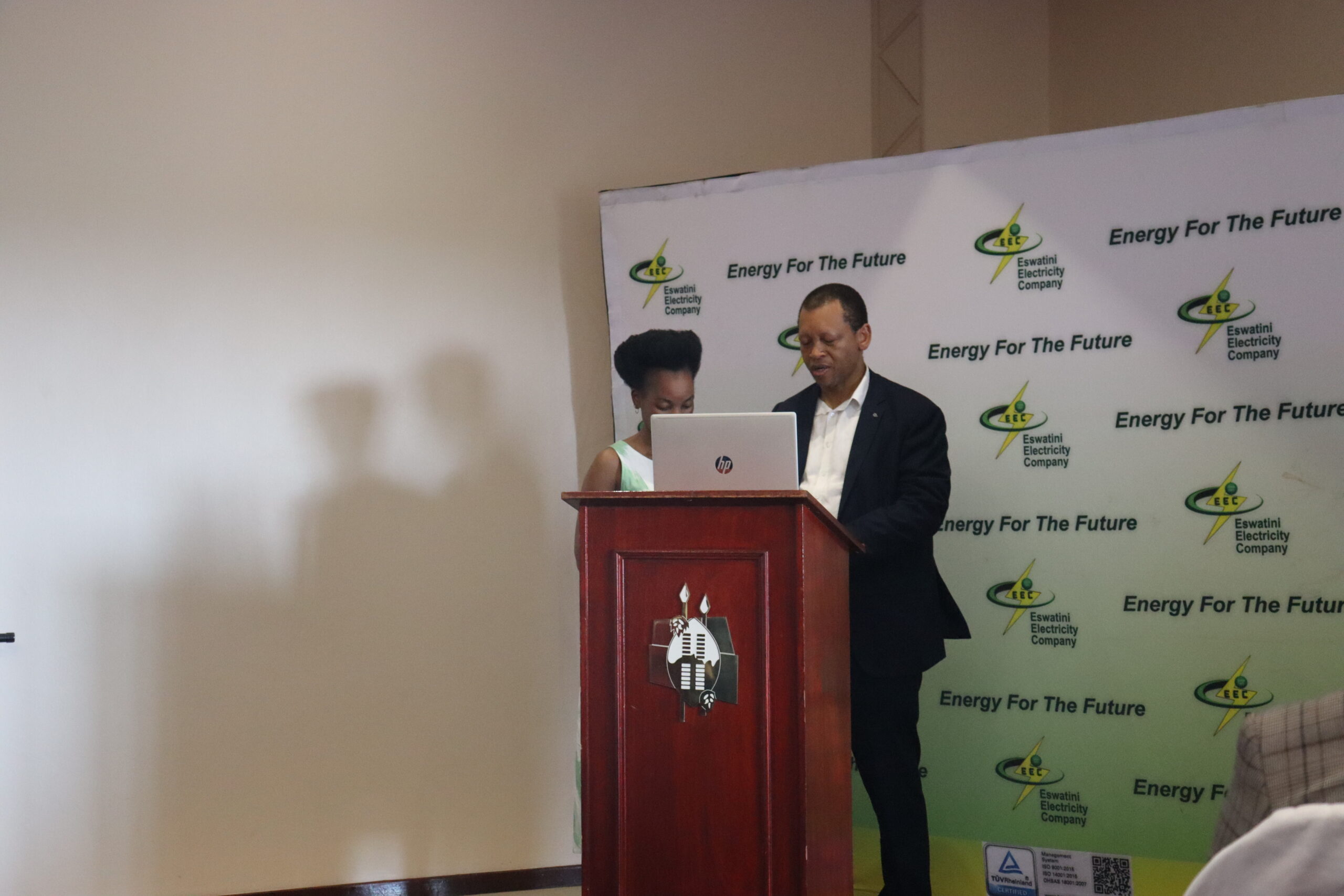
By Ntombi Mhlongo
A bigger chunk of the profits generated by the Eswatini Electricity Company (EEC) is used to fund the various projects that the parastatal commissions in different parts of the country.
Also, the profits generated are injected towards increasing generation capacity through solar and capital-intensive renewable energy while at the same time cushioning high electricity price increases. This assertion was made by EEC Managing Director Ernest Mkhonta when addressing the concern that the parastatal generated millions of profits but continued to implement electricity hikes.
The MD was speaking during a breakfast meeting with the Editors Forum at the Royal Villas yesterday and was meant to address some of the issues that have been raised following the proposed plan to increase electricity tariffs by 21.3 per cent. The proposed average price increase of 21.3 per cent is meant to cover EEC’s costs for the 2023/24 and 2024/25 financial years.
He explained that a stable and secure supply of electricity is essential to support the country’s economic growth and development, now and into the future. The MD said tariffs are the fairest and most efficient way to pay for electricity and ensure that the industry invests in the infrastructure needed to deliver what is required by the nation.
Elaborating, the MD stated that prices must cover the full cost of producing electricity from existing assets ensuring that EEC is financially stable.
“This must be planned with the impact of tariffs on the economy and less privileged households. We have looked hard at our costs for efficiency and kept our operating cost escalation (excluding imports) to a single digit for both years. The continued suppression of the tariffs over the past four years has set a domino effect that will lead to the average electricity prices skyrocketing in the future,” he explained.
Explaining some of the projects the parastatal has and or will undertake, he cited the rural electrification programme, saying about E88 million has been pumped into it and that it is meant to benefit 11 194 customers. He also cited the formulation of the Rural Electrification Access Fund where about E62 million has been pumped in and the project is meant to benefit 3 266 customers. Mkhonta further added that the parastatal also has to address several challenges which come with costs and these include increased incidents of electricity theft and copper.
“We also face challenges of infrastructure vandalism and unfavourable exchange rate fluctuations. There is also the high subsidization by businesses and of course the high costs which are caused by increased fuel and steel prices,” he highlighted.
On another note, the MD also disputed reports that a bigger chunk of the revenue generated by the parastatal covered high staff salaries. He explained that they were guided by the Public Enterprise Unit regulations when it comes to the payment and review of salaries. As such, he said, currently, the salaries accounted for only 8 per cent of the amount that is spent on operating costs. If there is no increase in the tariffs, the MD said there will be huge implications especially since the parastatal has in the past two years been lenient.
“The financial implications to EEC include deferral of some capital projects which have the effect of compromising the integrity of the network. Also, the delayed implementation of planned maintenance could result in increased outages thus negatively affecting the economy. Furthermore, not hiking the tariffs will lead to a depletion of cash reserves,” he explained.
A summary of capital projects planned by EEC reflects that about E527 million will be needed for the 2023/24 financial year while for the 2024/25 financial year the money needed amounts to E290 million.
“The rationale is that the return on investment allows EEC to be in a position to fund these projects and also makes provision for finance charges”,
…Negotiations with Eskom are still ongoing
While the challenges faced by South African power supplier Eskom seem to be far from over, there is no need for Eswatini to press the panic button. Speaking during the Editors Forum Breakfast Meeting at the Roya Villas, Eswatini Electricity Company (EEC) Managing Director Ernest Mkhonta explained that negotiations between his parastatal and the SA power supplier were still ongoing.
The two parties are expected to renew their bilateral agreement which comes to an end in 2025 and there are fears there could be challenges since Eskom is currently facing challenges. The MD was addressing a question by Eswatini Financial Times Managing Editor Alec Lushaba who asked to know what would happen if Eskom declared that it will no longer be able to supply the Kingdom of Eswatini. Lushaba asked to know how far EEC had gone in terms of finding alternatives to sourcing electricity.
In response, the MD said, “We are in constant contact with EEC. Now and again they do write to us. It is not just us but the region as a whole. The truth is that there are operating guidelines that are followed if one of the suppliers in the region is facing challenges. It cannot happen that Eskom will just wake up and take such a decision,” the MD said.
The MD was also asked to provide answers on when was the last time the EEC received a request to implement load-shedding and he responded by saying it was last month. He also shared insight into how the whole procedure of implementing load-shedding in Eswatini comes about.
“A request to implement a load-shedding does not just come. What happens is that when Eskom introduced stage one and stage two load-shedding, they do not send us that request. When on stage three, that is when they usually send the request because it is a time when Eskom’s system is now in dire need,” he said.
Sharing clarity on why exactly Eskom was forced to switch off the lights the MD said if Eskom is not load-shedding, its whole system would collapse which would mean a total blackout in the whole country and parts of the region.
“So, it is important that the demand and generation are both managed within the limits. The demand must not surpass the generational capacity because that leads to damage in the infrastructure which reduces the frequency,” Mkhonta said.




